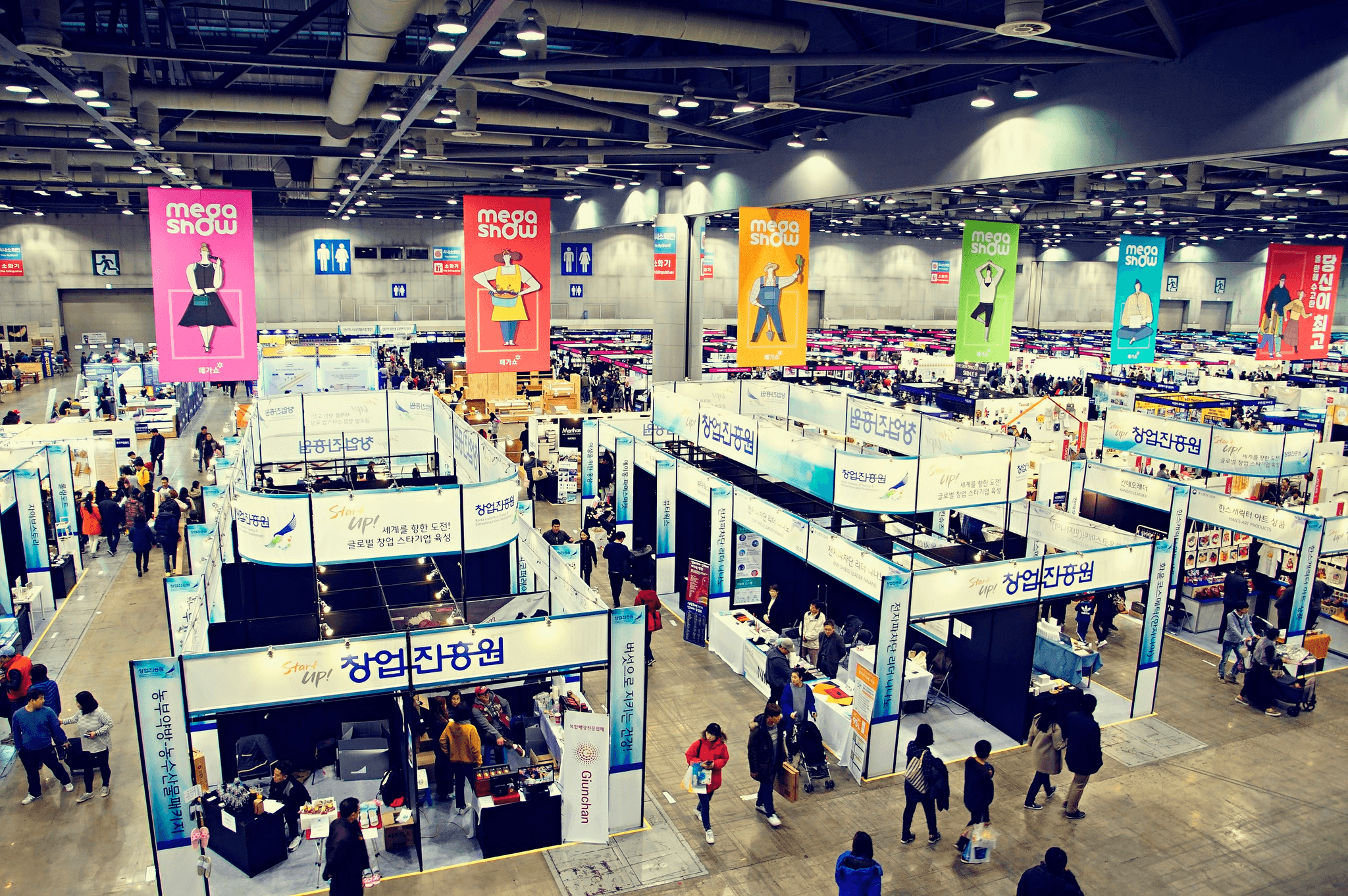Introduction
In the dynamic world of global trade, understanding the Asia sourcing landscape is crucial for entrepreneurs looking to expand their businesses. The continent has emerged as a powerhouse for manufacturing and supply chain solutions, offering a vast array of products at competitive prices. With countries like China, India, and Vietnam leading the charge, entrepreneurs can tap into this rich resource pool to enhance their offerings and drive profitability.
Understanding the Asia Sourcing Landscape
The Asia sourcing landscape is characterized by its diversity in culture, economy, and industry capabilities. Each country presents unique advantages; for instance, China's robust infrastructure supports mass production while India's tech-savvy workforce excels in IT services. Entrepreneurs must appreciate these nuances to navigate effectively through this multifaceted environment and identify opportunities that align with their business goals.
Why Entrepreneurs Should Consider Asia
Asia's appeal lies not just in cost savings but also in its potential for innovation and quality improvement. By engaging with suppliers across the region, entrepreneurs can access cutting-edge technologies and practices that can elevate their products beyond mere price competition. Additionally, establishing connections within this vibrant marketplace can lead to strategic partnerships that enhance brand visibility and market reach.
Key Considerations for Effective Sourcing
Effective asia sourcing requires a well-thought-out strategy that encompasses thorough research and relationship building with suppliers. Entrepreneurs should prioritize understanding local market dynamics, ensuring they select partners who not only meet quality standards but also align with their business ethos. Moreover, navigating cultural differences is essential; successful negotiations often hinge on mutual respect and clear communication tailored to each party's expectations.
Researching Your Product Market

When diving into the world of Asia sourcing, understanding your product market is crucial. The Asian marketplace is diverse and dynamic, presenting unique opportunities and challenges for entrepreneurs. To navigate this landscape effectively, you need to conduct thorough research that encompasses demand identification, competitive analysis, and cultural insights.
Identifying Demand in Asia
The first step in your Asia sourcing journey is identifying demand for your products within various Asian markets. This involves analyzing consumer trends, preferences, and purchasing behaviors specific to different regions in Asia. Tools like Google Trends or local market research reports can provide valuable insights into what consumers are looking for—whether it’s eco-friendly products or high-tech gadgets.
Once you have a grip on the demand landscape, consider how your offerings align with these needs. SSOURCING INC. can assist you in pinpointing lucrative niches that may not be saturated yet but show promising growth potential. Remember, a well-researched approach will set the foundation for successful sourcing strategies.
Competitive Analysis of Local Players
Understanding who your competitors are is equally critical when researching your product market in Asia sourcing. Conducting a competitive analysis allows you to assess local players' strengths and weaknesses while identifying gaps that your product might fill. Look at pricing strategies, marketing tactics, and customer engagement methods employed by these competitors.
Moreover, studying local brands can offer insights into consumer trust factors—what resonates with them? SSOURCING INC.’s expertise can help you navigate this competitive landscape by providing data-driven insights that inform your strategy against local players effectively.
Understanding Cultural Nuances
Cultural nuances play a significant role in shaping consumer behavior across Asia’s diverse markets; thus, understanding them is key to successful asia sourcing efforts. Each region has its own customs, values, and preferences that influence buying decisions—from color symbolism to seasonal trends—so take note! For instance, what might be considered luxury in one country could be viewed as unnecessary extravagance in another.
Engaging with local experts or leveraging resources from SSOURCING INC. can enhance your understanding of these cultural factors significantly. By respecting and adapting to these nuances during product development and marketing strategies, you'll foster stronger connections with consumers across Asia's vibrant markets.
Finding Reliable Suppliers

When it comes to asia sourcing, finding reliable suppliers is like searching for a needle in a haystack, but fear not! With the right strategies and tools, you can uncover trustworthy partners who will help bring your entrepreneurial vision to life. SSOURCING INC. is here to guide you through this pivotal process.
The Role of Trade Shows
Trade shows are the bustling marketplaces of the asia sourcing world, where innovation meets opportunity. These events allow entrepreneurs to connect face-to-face with potential suppliers, giving you an invaluable chance to assess their capabilities firsthand. Not only can you gather product samples and brochures, but you'll also gain insights into market trends and competitor offerings that can inform your business strategy.
Attending trade shows is not just about collecting business cards; it's about building relationships that can lead to fruitful partnerships. You’ll find that many suppliers showcase their best products at these events, allowing you to gauge quality and craftsmanship live and in person. Plus, the vibrant atmosphere often leads to spontaneous discussions that could unlock new sourcing opportunities for your business.
Recommended Platforms for Supplier Discovery
In today's digital age, online platforms have revolutionized asia sourcing by making supplier discovery more accessible than ever before. Websites like Alibaba, Global Sources, and ThomasNet provide extensive databases of manufacturers across various industries—perfect for entrepreneurs looking to expand their product lines without breaking a sweat! SSOURCING INC. recommends leveraging these platforms not just for initial contact but also for ongoing research into supplier reliability.
While these platforms are convenient, it's essential to navigate them wisely. Look for verified suppliers with positive reviews and established track records; this will save you time and potential headaches down the line. Remember that communication is key—reach out with questions about minimum order quantities or customization options before committing.
How to Verify Supplier Credentials
Once you've identified potential suppliers through trade shows or online platforms, verifying their credentials becomes crucial in the asia sourcing process. Start by asking for references from previous clients; genuine suppliers should be happy to provide them as proof of their reliability and professionalism. Additionally, consider requesting documentation such as business licenses or certifications that demonstrate compliance with industry standards.
Another effective method is conducting factory visits or audits if feasible; nothing beats seeing operations firsthand! If travel isn't an option, consider hiring third-party inspection services that specialize in supplier verification—they'll provide an unbiased assessment of your prospective partners' capabilities and practices. By taking these steps seriously, you'll build a solid foundation for successful collaboration down the road.
Negotiating Contracts and Pricing

Negotiating contracts and pricing is a crucial step in the Asia sourcing process that can make or break your business deal. Understanding the nuances of negotiation in Asia can lead to better terms, stronger relationships with suppliers, and ultimately, a more profitable venture. With the right strategies and knowledge, entrepreneurs can navigate this complex landscape effectively.
Key Terms Every Entrepreneur Should Know
When diving into asia sourcing, familiarity with key terms is essential for effective communication and negotiation. Terms like FOB (Free on Board), CIF (Cost Insurance Freight), and MOQ (Minimum Order Quantity) are often thrown around and can significantly impact your bottom line. Knowing these terms not only empowers you during discussions but also helps you avoid potential pitfalls that could derail your sourcing efforts.
Additionally, understanding concepts such as lead time, payment terms, and warranty clauses will provide you with a comprehensive toolkit for negotiations. Each term carries weight in contract discussions; hence grasping their implications can help you secure favorable conditions with suppliers. At SSOURCING INC., we emphasize that knowledge is power—especially when it comes to negotiating contracts in the dynamic world of asia sourcing.
Strategies for Effective Negotiation
Effective negotiation requires more than just knowing key terms; it demands strategy and finesse, especially in the context of asia sourcing. Start by building rapport with your suppliers—trust goes a long way in fostering productive discussions. Engaging in small talk about local culture or shared interests can create a friendly atmosphere conducive to open dialogue.
Another strategy is to clearly define your priorities before entering negotiations; know what you're willing to compromise on and what’s non-negotiable for your business goals. Utilize data from your competitive analysis to support your arguments—hard facts about market prices or demand trends can strengthen your position significantly. At SSOURCING INC., we believe that being well-prepared not only boosts confidence but also enhances outcomes during negotiations.
Lastly, don’t shy away from walking away if the deal doesn’t meet your criteria; sometimes showing that you're willing to explore other options prompts suppliers to offer better terms than initially proposed. Remember, effective negotiation is about finding a win-win situation where both parties feel satisfied with the agreement reached.
Understanding Payment Terms and Conditions
In any asia sourcing agreement, payment terms are often where misunderstandings arise—clarity here is paramount for both parties involved! Common payment methods include wire transfers, letters of credit (LCs), or even PayPal; each comes with its own risks and benefits depending on the relationship established with the supplier. Knowing which method aligns best with your risk tolerance will save you headaches down the road.
Moreover, understanding payment schedules is vital: whether it's upfront payments or net 30/60/90 days after delivery affects cash flow management significantly for entrepreneurs at SSOURCING INC.. Make sure all agreed-upon payment conditions are documented clearly within contracts so there’s no room for ambiguity later on.
Lastly, be aware of currency fluctuations if you're dealing internationally—they can impact costs unexpectedly! Agreeing on fixed pricing or hedging strategies could safeguard against sudden changes in exchange rates during transactions related to asia sourcing.
Quality Control and Assurance

In the world of Asia sourcing, ensuring quality control and assurance is paramount for entrepreneurs looking to establish a successful supply chain. With numerous suppliers available, setting clear quality standards can help differentiate your products in the competitive market. SSOURCING INC. emphasizes that having robust quality protocols not only safeguards your brand reputation but also fosters trust with consumers.
Establishing Quality Standards
Establishing quality standards is the first step in the Asia sourcing journey that cannot be overlooked. Entrepreneurs should define specific criteria that their products must meet, including materials used, manufacturing processes, and end-product performance. By doing so, you create a benchmark for suppliers to follow, which minimizes misunderstandings and miscommunications down the line.
Moreover, it’s essential to consider industry-specific regulations and certifications when establishing these standards. For instance, if you’re sourcing electronics from Asia, compliance with safety regulations such as CE or UL certification may be necessary. SSOURCING INC. suggests collaborating with local experts who can provide insights into these requirements and help tailor your standards accordingly.
The Importance of Inspections
When it comes to Asia sourcing, inspections play a crucial role in maintaining quality assurance throughout the production process. Regular inspections ensure that products meet established standards before they leave the factory floor or arrive at their final destination. This proactive approach helps identify any potential issues early on—saving time and money while protecting your brand's integrity.
There are various types of inspections to consider: pre-production inspections (PPI), during production inspections (DPI), and pre-shipment inspections (PSI). Each serves a unique purpose in ensuring that your product aligns with the established quality benchmarks set forth earlier in the process. SSOURCING INC. recommends partnering with third-party inspection agencies for unbiased evaluations that can offer peace of mind.
Strategies for Resolving Quality Issues
Even with thorough planning and rigorous inspections, issues may still arise during your Asia sourcing experience—so having effective strategies for resolution is key! When faced with quality concerns, prompt communication with your supplier is vital; addressing problems early can lead to quicker resolutions without escalating tensions or damaging relationships.
One effective strategy involves documenting all findings related to quality issues meticulously; this provides clarity when discussing discrepancies with suppliers or negotiating solutions such as refunds or replacements. Additionally, offering constructive feedback helps build stronger partnerships over time while reinforcing expectations around product quality moving forward.
SSOURCING INC.’s experience shows that fostering open communication lines creates an environment where both parties feel comfortable discussing challenges openly—turning potential conflicts into collaborative problem-solving opportunities instead!
Navigating Logistics and Shipping

When it comes to asia sourcing, understanding logistics and shipping is critical to the success of your venture. The right logistics strategy not only ensures timely delivery but also significantly impacts cost efficiency. At SSOURCING INC., we believe that a well-planned shipping process can set you apart from competitors.
Understanding Shipping Options from Asia
Shipping options from Asia are as diverse as the region itself, ranging from air freight to ocean freight, each with its pros and cons. Air freight is faster but often more expensive, making it ideal for high-value or time-sensitive goods. On the other hand, ocean freight is cost-effective for bulk shipments but requires more time—perfect for those who can plan ahead in their asia sourcing endeavors.
In addition to traditional methods, consider newer options like express courier services or consolidated shipments that can offer flexibility and savings. It's essential to weigh these options based on your product type, budget constraints, and delivery timelines. SSOURCING INC. recommends conducting thorough research on various carriers to find the best fit for your specific needs.
Customs and Import Regulations
Navigating customs and import regulations can feel like solving a Rubik's Cube blindfolded; however, it's crucial for successful asia sourcing. Each country has its own rules regarding tariffs, duties, and documentation requirements that you must understand before importing goods from Asia. Failing to comply with these regulations could lead to costly delays or even confiscation of your products.
To streamline this process, familiarize yourself with the Harmonized System (HS) codes relevant to your products—these codes determine tariff rates and help in proper classification during customs clearance. Partnering with a reliable customs broker can also ease this burden by ensuring all paperwork is in order and adhering to local laws. At SSOURCING INC., we emphasize the importance of staying updated on regulatory changes that could impact your business.
Cost Management in Logistics
Cost management in logistics is an art form every entrepreneur must master when engaging in asia sourcing activities. From shipping fees to storage costs at ports or warehouses, every aspect adds up quickly if not monitored closely. To keep expenses under control, consider negotiating rates with carriers or exploring volume discounts based on projected shipment sizes.
Additionally, leveraging technology such as logistics management software can help you track shipments in real-time while providing insights into potential cost-saving opportunities throughout the supply chain process. Regularly reviewing shipping invoices for discrepancies will also ensure you're not overpaying for services rendered—an easy way to boost profitability! At SSOURCING INC., we believe that effective cost management strategies are key components of successful asia sourcing endeavors.
Conclusion

In the ever-evolving world of business, mastering the art of Asia sourcing can be a game-changer for entrepreneurs. By understanding the nuances of this vibrant market, you can effectively tap into its vast potential and optimize your supply chain. With careful planning and execution, successful sourcing from Asia is not just a possibility; it's an achievable goal.
Best Practices for Successful Sourcing
When it comes to asia sourcing, there are several best practices that can streamline your process and enhance outcomes. First, always conduct thorough research before diving into supplier relationships; knowing market trends and local demands is crucial. Additionally, maintaining clear communication with suppliers will help ensure that expectations are met and misunderstandings are minimized—this is where SSOURCING INC. shines by facilitating transparent dialogues.
Another key practice is to remain flexible in your strategies; the landscape can shift quickly in asia sourcing due to economic changes or cultural shifts. Regularly revisiting your sourcing strategy allows you to adapt and seize new opportunities as they arise. Finally, leveraging technology for project management can boost efficiency and keep everyone on the same page.
Building Long-Term Supplier Relationships
Building long-term relationships with suppliers is vital in asia sourcing as it fosters trust and reliability over time. When you invest in these partnerships, you're not only securing a steady supply but also gaining invaluable insights into market trends directly from those who know it best—the suppliers themselves! SSOURCING INC. emphasizes relationship-building as a cornerstone of effective sourcing strategies.
It's essential to treat your suppliers as partners rather than mere vendors; this mindset shift encourages collaboration on product development or logistics solutions that benefit both parties. Regular check-ins—whether virtual or face-to-face—can strengthen these bonds further by showing commitment beyond transactional interactions. Remember, strong relationships often lead to better pricing negotiations and priority service during peak seasons.
Embracing Change in the Sourcing Process
In today's fast-paced business environment, embracing change is crucial for successful asia sourcing initiatives. The ability to pivot when necessary ensures that you're not left behind while competitors adapt more swiftly to market demands or disruptions like global supply chain issues or technological advancements. SSOURCING INC.'s proactive approach helps businesses stay ahead by anticipating changes rather than reacting after they occur.
Moreover, staying informed about innovations in logistics or supplier capabilities allows entrepreneurs to refine their strategies continually—and who doesn’t love an edge over their competition? Encourage team members to share insights from their experiences with suppliers so you can collectively embrace new ideas that improve operations across the board. Ultimately, adaptability will be your greatest ally in navigating the complexities of asia sourcing while ensuring long-term success.

